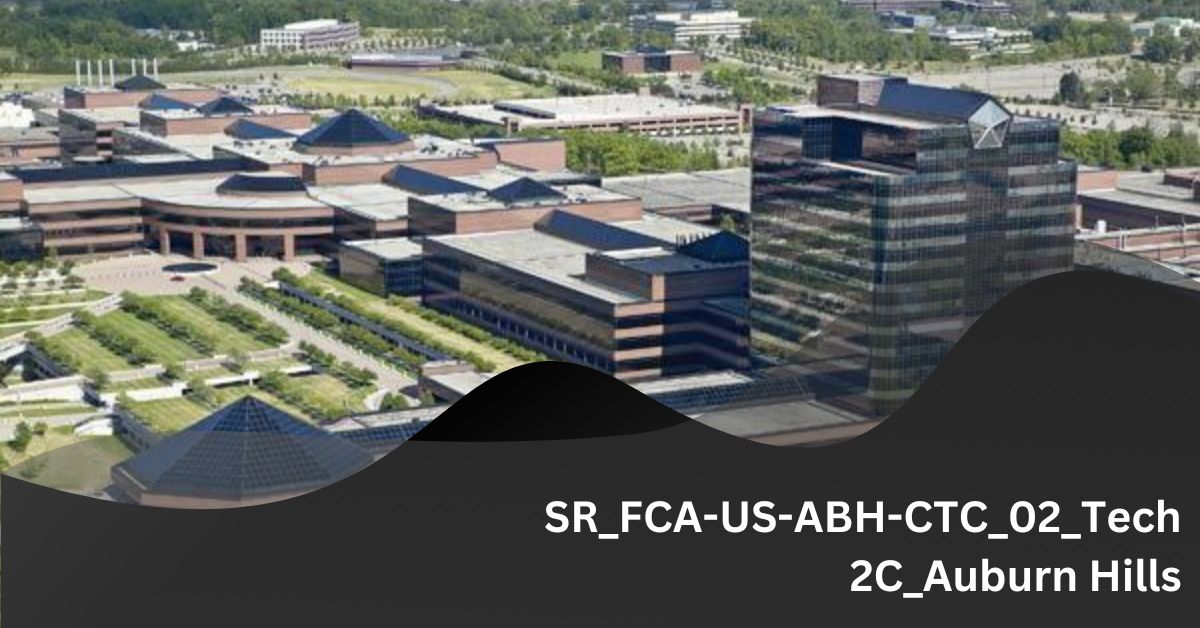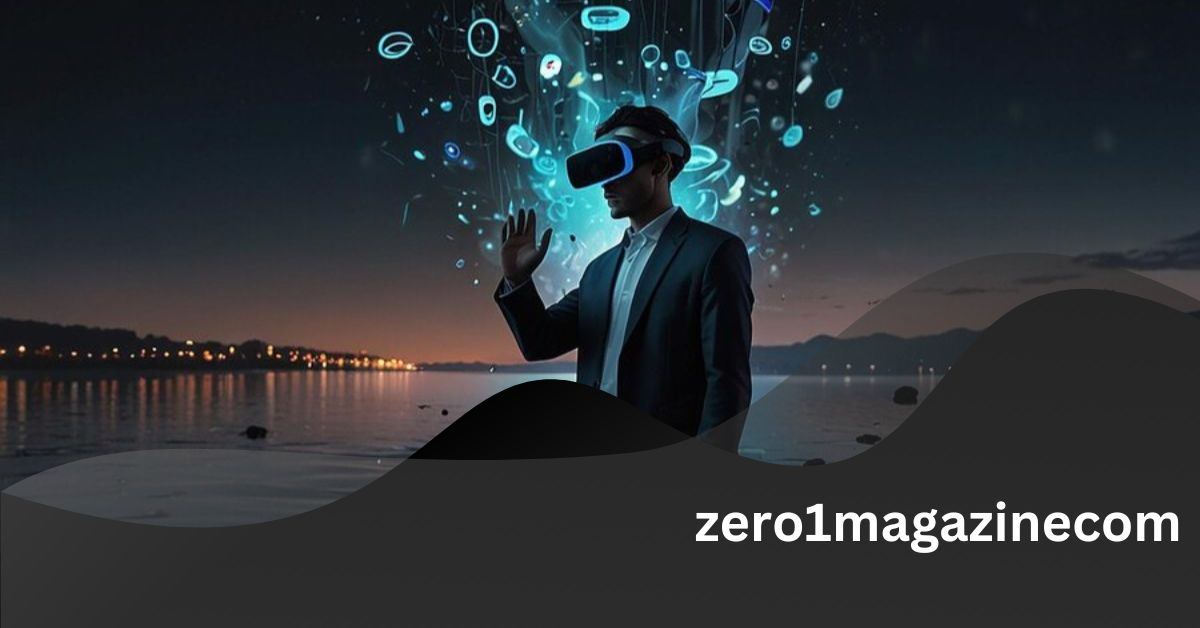In the world of automotive engineering, the term “SR_FCA-US-ABH-CTC_02_Tech 2C_Auburn Hills” has become synonymous with innovation and forward-thinking. As part of the FCA (Fiat Chrysler Automobiles) group, now under Stellantis, this center is a beacon of technological advancements and sustainable practices in the automotive industry.
This article will explore the intricacies of SR_FCA-US-ABH-CTC_02_Tech 2C_Auburn Hills, detailing its role in the automotive landscape, its cutting-edge facilities, and the impact of its research and development (R&D) efforts.
What is SR_FCA-US-ABH-CTC_02_Tech 2C_Auburn Hills?
SR_FCA-US-ABH-CTC_02_Tech 2C_Auburn Hills is an advanced technology center located in Auburn Hills, Michigan, USA. It operates as part of the Stellantis Group, formerly known as FCA (Fiat Chrysler Automobiles). The center focuses on automotive engineering, with a significant emphasis on research, development, and innovation.
A Hub of Innovation
SR_FCA-US-ABH-CTC_02_Tech 2C_Auburn Hills is not just another facility; it is a hub where the future of the automotive industry is being shaped. The center’s commitment to pushing the boundaries of what is possible in automotive design and functionality is evident in every aspect of its operation. From electric vehicle (EV) development to advanced driver assistance systems (ADAS), the facility plays a pivotal role in shaping the next generation of vehicles.
Sustainability at the Core
In today’s world, sustainability is not just a buzzword; it is a necessity. SR_FCA-US-ABH-CTC_02_Tech 2C_Auburn Hills takes this responsibility seriously. The center is designed to minimize its environmental footprint through the use of energy-efficient technologies, waste reduction practices, and sustainable materials. This commitment to sustainability is evident not only in the operations of the facility but also in the vehicles and technologies being developed there.
The Facilities: A Closer Look at SR_FCA-US-ABH-CTC_02_Tech 2C_Auburn Hills
One of the standout features of SR_FCA-US-ABH-CTC_02_Tech 2C_Auburn Hills is its state-of-the-art facilities. Designed to foster creativity and innovation, these facilities are equipped with the latest technologies and tools needed for cutting-edge automotive research and development.
Laboratories and Testing Centers
The center boasts a wide array of specialized laboratories and testing centers, each tailored to specific aspects of automotive engineering. These include:
- Powertrain Labs: Focused on the development and testing of engines, transmissions, and hybrid systems. These labs are critical in the creation of more efficient and powerful powertrains that meet the demands of modern vehicles.
- Electrification Labs: Dedicated to the development of electric vehicle (EV) technology, these labs work on everything from battery design to electric drivetrains, ensuring that Stellantis remains at the forefront of the EV revolution.
- Safety Testing Facilities: Safety is a top priority at SR_FCA-US-ABH-CTC_02_Tech 2C_Auburn Hills. The facility includes state-of-the-art crash testing centers and labs where advanced safety systems, such as airbags and collision avoidance technologies, are rigorously tested.
- Virtual Design Studios: Utilizing the latest in computer-aided design (CAD) and virtual reality (VR), these studios allow engineers and designers to create and refine vehicle designs before any physical prototypes are built. This not only speeds up the development process but also reduces costs and environmental impact.
Collaborative Spaces
Innovation often happens at the intersections of different fields, which is why SR_FCA-US-ABH-CTC_02_Tech 2C_Auburn Hills is designed with collaboration in mind. The facility features numerous collaborative spaces where engineers, designers, and researchers can work together on projects. These spaces are equipped with the latest communication technologies to facilitate collaboration with teams around the world.
Sustainability-Focused Infrastructure
Beyond the laboratories and collaborative spaces, the entire infrastructure of SR_FCA-US-ABH-CTC_02_Tech 2C_Auburn Hills is designed with sustainability in mind. The building incorporates energy-efficient lighting, heating, and cooling systems. Additionally, it employs advanced water management systems to reduce water consumption. These features make the facility not only a leader in automotive innovation but also a model of sustainable industrial design.
The Role of SR_FCA-US-ABH-CTC_02_Tech 2C_Auburn Hills in Automotive R&D
Research and Development (R&D) is the lifeblood of the automotive industry, driving the innovation that leads to new vehicle models, improved safety features, and enhanced performance. SR_FCA-US-ABH-CTC_02_Tech 2C_Auburn Hills is at the forefront of this effort within Stellantis, focusing on several key areas.
Electric and Hybrid Vehicle Development
As the automotive industry shifts toward electrification, SR_FCA-US-ABH-CTC_02_Tech 2C_Auburn Hills plays a critical role in the development of electric and hybrid vehicles. The facility’s R&D teams are responsible for designing and testing the batteries, electric motors, and control systems that power these vehicles. Their work ensures that Stellantis’s electric vehicles meet the highest standards of performance, efficiency, and safety.
Advanced Driver Assistance Systems (ADAS)
Another key area of focus is Advanced Driver Assistance Systems (ADAS). These systems, which include features like adaptive cruise control, lane-keeping assistance, and automatic emergency braking, are essential for improving vehicle safety and paving the way for autonomous driving. The R&D teams at SR_FCA-US-ABH-CTC_02_Tech 2C_Auburn Hills are at the cutting edge of ADAS development, working on the next generation of these technologies.
Connected Vehicle Technology
In the modern automotive landscape, vehicles are no longer isolated machines; they are connected devices that interact with each other and the world around them. SR_FCA-US-ABH-CTC_02_Tech 2C_Auburn Hills is deeply involved in the development of connected vehicle technology, which allows vehicles to communicate with each other (V2V) and with infrastructure (V2I) to improve safety, efficiency, and the overall driving experience.
Sustainable Materials and Manufacturing Processes
Sustainability is a core focus of the R&D efforts at SR_FCA-US-ABH-CTC_02_Tech 2C_Auburn Hills. This includes not only the development of fuel-efficient and low-emission vehicles but also the use of sustainable materials and manufacturing processes. The center’s teams are researching ways to reduce the environmental impact of vehicle production, from using recycled materials to developing more efficient manufacturing techniques.
The Impact of SR_FCA-US-ABH-CTC_02_Tech 2C_Auburn Hills on the Automotive Industry
The work being done at SR_FCA-US-ABH-CTC_02_Tech 2C_Auburn Hills has a far-reaching impact on the automotive industry as a whole. The innovations developed at this facility not only benefit Stellantis but also set new standards for the industry.
Driving Industry Standards
Many of the technologies developed at SR_FCA-US-ABH-CTC_02_Tech 2C_Auburn Hills eventually become industry standards. For example, advancements in safety technology, such as collision avoidance systems and advanced airbags, have been widely adopted across the industry. Similarly, the center’s work on electrification and sustainability is helping to drive the entire industry toward a more sustainable future.
Economic Impact
Beyond its impact on technology and industry standards, SR_FCA-US-ABH-CTC_02_Tech 2C_Auburn Hills also has a significant economic impact. The facility provides high-quality jobs for engineers, designers, and researchers, contributing to the local economy in Auburn Hills and the broader Michigan area. Additionally, the innovations developed at the center help Stellantis maintain its competitive edge in the global automotive market, contributing to the company’s overall financial success.
Environmental Impact
The focus on sustainability at SR_FCA-US-ABH-CTC_02_Tech 2C_Auburn Hills extends beyond the vehicles themselves to the entire lifecycle of automotive production. By developing more efficient manufacturing processes and using sustainable materials, the center is helping to reduce the environmental impact of vehicle production. This not only benefits the environment but also helps Stellantis meet increasingly stringent environmental regulations.
The Future of SR_FCA-US-ABH-CTC_02_Tech 2C_Auburn Hills
Looking ahead, the future of SR_FCA-US-ABH-CTC_02_Tech 2C_Auburn Hills is bright. As the automotive industry continues to evolve, the center will play a key role in driving this evolution. Several trends and technologies will shape the future of the center and the industry as a whole.
Autonomous Vehicles
One of the most exciting areas of automotive innovation is autonomous vehicles. SR_FCA-US-ABH-CTC_02_Tech 2C_Auburn Hills is heavily involved in the development of autonomous driving technology. The center’s work on ADAS is laying the groundwork for fully autonomous vehicles, which have the potential to revolutionize transportation by improving safety, reducing traffic congestion, and providing new mobility options for people who cannot drive.
Electrification and Beyond
Electrification will continue to be a major focus for the center as the industry moves toward zero-emission vehicles. However, the future of automotive powertrains may extend beyond batteries to include technologies like hydrogen fuel cells. SR_FCA-US-ABH-CTC_02_Tech 2C_Auburn Hills is likely to play a key role in researching and developing these alternative powertrains, ensuring that Stellantis is prepared for whatever the future of transportation holds.
Sustainable Innovation
Sustainability will remain a core focus of SR_FCA-US-ABH-CTC_02_Tech 2C_Auburn Hills. The center will continue to explore new ways to reduce the environmental impact of vehicles and manufacturing processes. This includes not only improving the efficiency of existing technologies but also developing entirely new approaches to automotive design and production that prioritize sustainability from the ground up.
Why SR_FCA-US-ABH-CTC_02_Tech 2C_Auburn Hills Matters
In an industry that is constantly evolving, SR_FCA-US-ABH-CTC_02_Tech 2C_Auburn Hills stands out as a leader in innovation and sustainability. The work being done at this facility is not only shaping the future of Stellantis but also setting new standards for the entire automotive industry. From developing cutting-edge technologies to promoting sustainable practices, SR_FCA-US-ABH-CTC_02_Tech 2C_Auburn Hills is a driving force behind the future of transportation.
FAQs About SR_FCA-US-ABH-CTC_02_Tech 2C_Auburn Hills
Q1: What does SR_FCA-US-ABH-CTC_02_Tech 2C_Auburn Hills stand for?
A: SR_FCA-US-ABH-CTC_02_Tech 2C_Auburn Hills is an advanced technology center in Auburn Hills, Michigan. It focuses on automotive engineering and innovation as part of Stellantis, formerly known as Fiat Chrysler Automobiles (FCA).
Q2: What are the main areas of focus at SR_FCA-US-ABH-CTC_02_Tech 2C_Auburn Hills?
A: The center focuses on several key areas, including electric and hybrid vehicle development, Advanced Driver Assistance Systems (ADAS), connected vehicle technology, and sustainable materials and manufacturing processes.
Q3: How does SR_FCA-US-ABH-CTC_02_Tech 2C_Auburn Hills contribute to sustainability?
A: SR_FCA-US-ABH-CTC_02_Tech 2C_Auburn Hills is committed to sustainability through the development of fuel-efficient and low-emission vehicles, as well as the use of sustainable materials and manufacturing processes. The facility itself is also designed to minimize its environmental footprint.
Q4: What role does SR_FCA-US-ABH-CTC_02_Tech 2C_Auburn Hills play in the development of autonomous vehicles?
A: The center is heavily involved in the development of autonomous driving technology, particularly through its work on Advanced Driver Assistance Systems (ADAS). These technologies are essential building blocks for fully autonomous vehicles.
Q5: What is the future of SR_FCA-US-ABH-CTC_02_Tech 2C_Auburn Hills?
A: The future of SR_FCA-US-ABH-CTC_02_Tech 2C_Auburn Hills is focused on continued innovation in areas like electrification, autonomous vehicles, and sustainable automotive practices. The center will remain a leader in shaping the future of the automotive industry.
Conclusion
SR_FCA-US-ABH-CTC_02_Tech 2C_Auburn Hills is more than just a research and development center; it is a symbol of what the future of the automotive industry can be. Through its commitment to innovation, sustainability, and collaboration, the center is helping to shape a future where vehicles are not only more advanced but also more environmentally friendly.
As the automotive industry continues to evolve, SR_FCA-US-ABH-CTC_02_Tech 2C_Auburn Hills will undoubtedly remain at the forefront, driving the innovations that will define the next generation of transportation.



